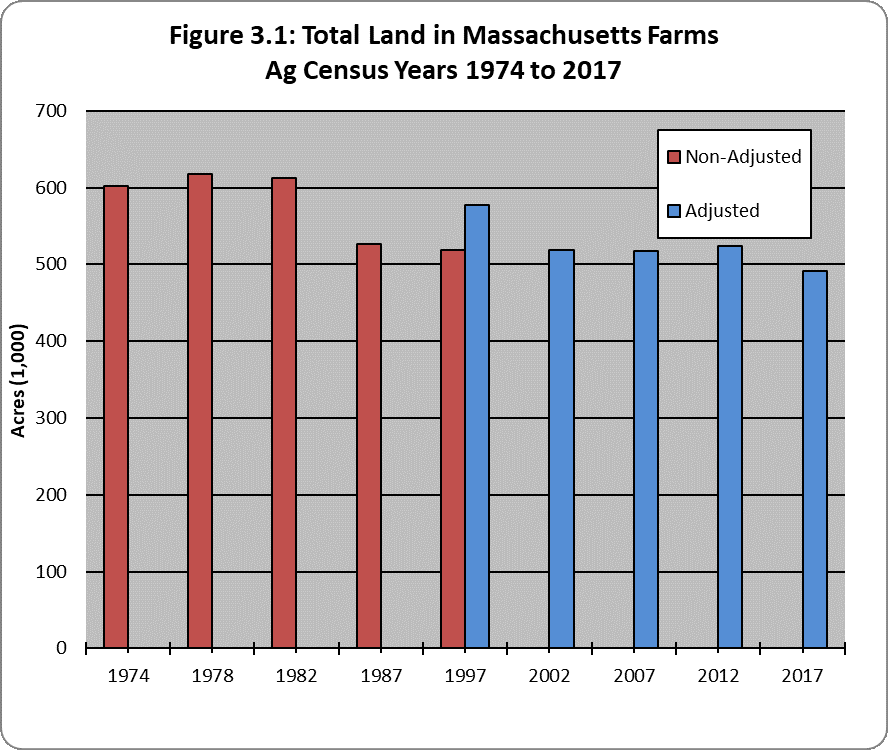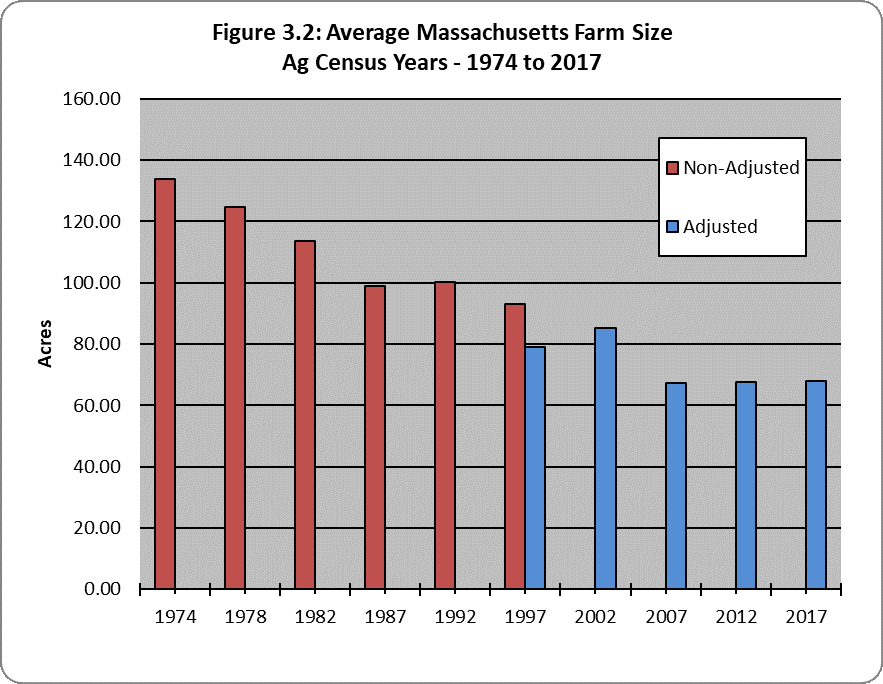Acres - Land in Farms
Massachusetts Agricultural Census 2017
Between 1997 and 2017, as the number of farms declined in Massachusetts, so did the total land in agriculture. The total amount of land in farms decreased from 577,637 acres in 1997 to 518,570 acres in 2002. The average farm size in Massachusetts declined steadily from over 130 acres per farm in 1974 to 79 acres in 1997 (Figure 3.2). With the exit of many smaller farms between 1997 and 2002, the average farm size increased to 85 acres in 2002. The total amount of land in farms further decreased to 517,879 acres in 2007, a very small 0.13 percent decline when compared to 2002. The 2012 Census showed a modest increase in the total amount of land in farms, with a 1.1 percent increase to 523,517 acres, but that increase has been erased in 2017. The total land in farms decreased 6 percent in 2017 to 491,653 acres. Despite the overall decrease in acreage, the average farm size has held steady between 67 and 68 acres since 2007.


Traditional farm types hold the most farmland
In terms of farm numbers, the 2017 top three types of farming in Massachusetts are: hay farming; vegetable and melon farming, and horses and other equine production; However, which types of farming hold the greatest amounts of farmland? Open farmland is an important feature of the Massachusetts landscape. Hay farming is the most common type of farming, and it holds the greatest amount of farmland with 104,304 acres, about 21 percent of the Commonwealth's farmland. Hay farms tend to be large by Massachusetts standards, with an average of about 104 acres per farm compared to the 2017 average Massachusetts farm, which is 68 acres in size. Fruit, tree nut and berry farms check in at number two, accounting for just over 79,697 acres of Massachusetts' farmland, 16.2 percent of the Commonwealth's total. Fruit and tree nut farms also tend to be relatively large by Massachusetts standards, there are about 94 acres per farm on average. When combined, these two types of farming represent about 37 percent of the state's farmland.
Dairy farming in Massachusetts accounts for 49,744 acres of farmland, about 10 percent of the total. Dairy farms are the Commonwealth's largest farms on average; each dairy farm is nearly 355 acres in size. Hay farming and dairy farming are related as hay farms provide forage for dairy farms as well as the horse farms in the state. Thus, the tenuous state of dairy farming in the Commonwealth has implications for the importance of farmland and open space preservation in Massachusetts. A number of farm types (sheep and goats; greenhouse, nursery and floriculture; beef cattle; horse and equine; other crop farming; and vegetable and melon farming) each represent between 20,000 and 47,000 acres of farmland. Each of these represents between 4.6 and 9.6 percent of the Commonwealth's total farmland. Horse and equine production, represents about 4.9 percent of the Commonwealth's total farmland with around 24,132 acres of Massachusetts farmland.
